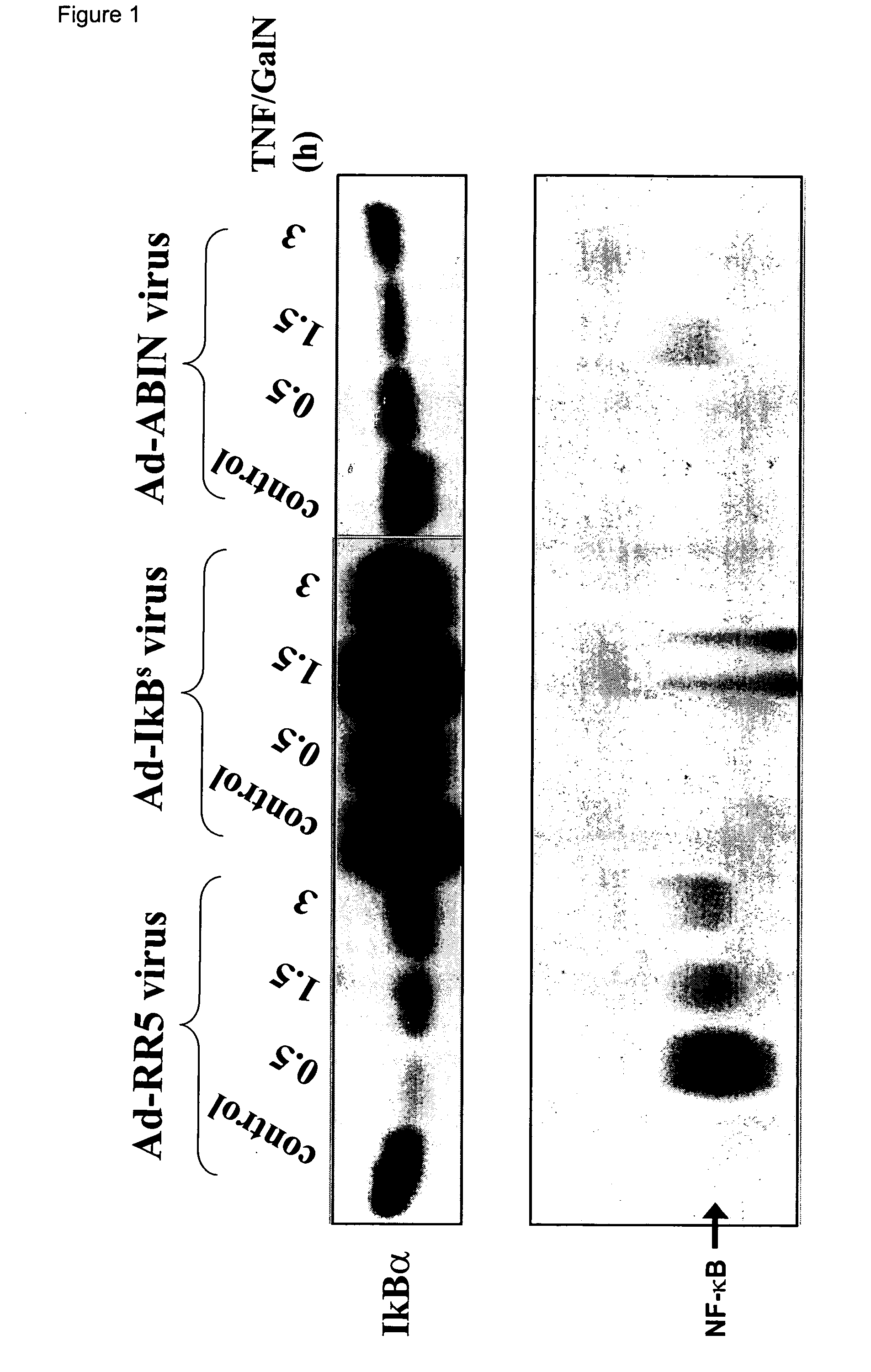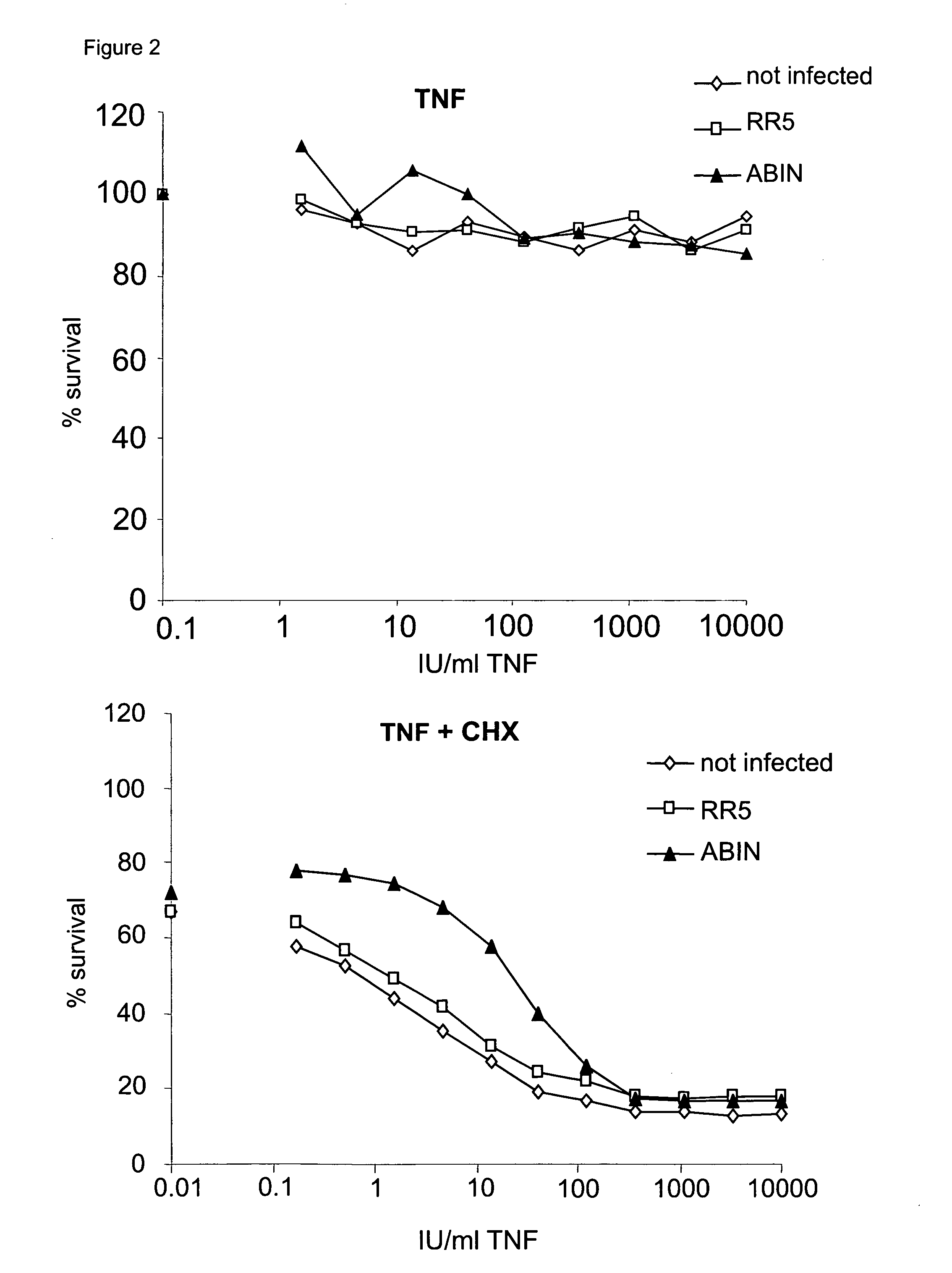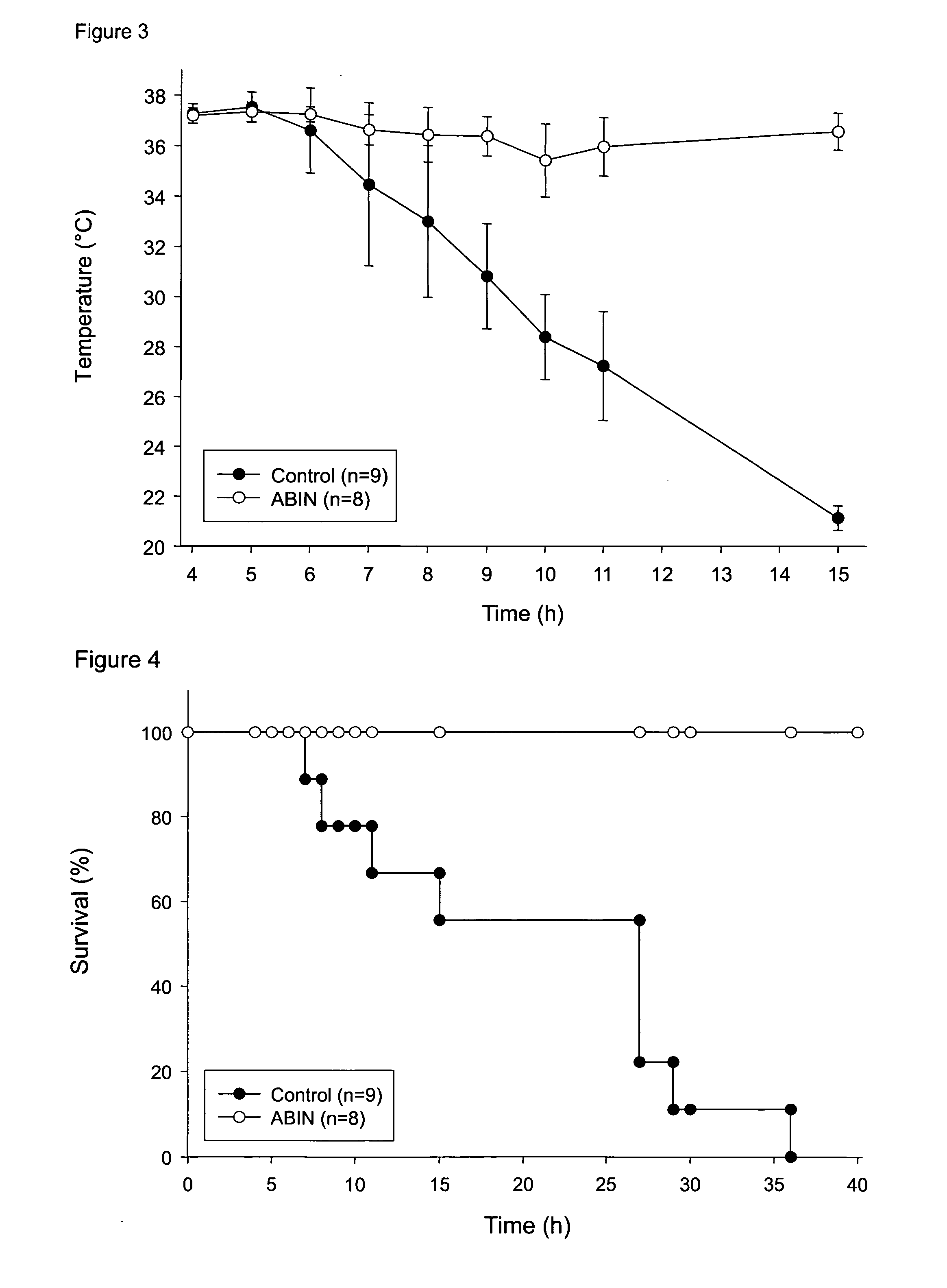Abin-mediated hepatitis protection
- Summary
- Abstract
- Description
- Claims
- Application Information
AI Technical Summary
Benefits of technology
Problems solved by technology
Method used
Image
Examples
example 1
Eneration of the ABIN Adenovirus
[0045]The murine ABIN cDNA, N-terminally fused to an E-tag, was amplified via PCR with forward (5′cgggatccgccatgggtgcgccggtgcc3′ (SEQ ID NO:6)) and reverse (5′ccccaagcttaaatgacccactgcagcc3′ (SEQ ID NO:7)) primers that contained restriction sites for BamHI and HindIII, respectively. The resulting fragment was cloned into a BamHI and HindIII opened pLpA.CMV shuttle vector (Gomez-Foix et al., 1992), and cotransfected with pJM17 (McGrory et al., 1988) by DNA / calcium phosphate coprecipitation in 911 retina cells. In vivo recombination of the shuttle vector expressing the ABIN trangene with the pJM17 backbone resulted in the production of a replication-deficient E1-deleted adenovirus type 5 (AdABIN). A control virus (AdRR5), which does not express a transgene, was generated in a similar way. Following recombination, recombinant plaques were isolated, extracted DNA was verified via PCR, and expression of the correct transgene was confirmed by means of Wester...
example 2
Expression of ABIN in Vitro Upon Infection with AdABIN
[0046]AdABIN was tested for the expression of the transgene in the BWTG3 hepatoma cell line (Szpirer and Szpirer, 1975). Infection with AdABIN was performed at a multiplicity of infection (moi) 100:1. Cells were incubated with virus in a minimal volume of serum-free medium for two hours, after which serum containing medium was added for overnight incubation. For controlling the expression of ABIN, cells were lysed 24 hours after infection and analyzed by SDS-PAGE and immunoblotting with HRP-coupled anti E-tag antibodies (Amersham). Infection with AdABIN resulted in clear expression of ABIN (data not shown).
[0047]Efficiency of infection and the subcellular expression pattern of ABIN was analysed by immunofluorescence. In this case, cells were splitted and seeded onto cover slips 24 hours after infection. Another 24 hours later, cells were washed, fixed with 100% methanol at −20° C. for ten minutes and permeabilized with 1% Triton ...
example 3
Inhibition of TNF-Induced NF-κB-Dependent Gene Expression In Vitro by AdABIN
[0048]To analyze the effect of ABIN on NF-κB-dependent gene expression, cells were transfected with pNFconluc 24 hours after infection. The latter carries a luciferase reporter gene that is preceded by a minimal promoter and three NF-κB-binding sites (Kimura et al., 1986). Transfection was performed using the FuGene transfection reagent according to the instructions of the manufacturer (Roche Biochemicals). A 6:1 FuGene:DNA ratio was used, and FuGene:DNA mixtures were preincubated for 45 minutes prior to addition to the cells for 24 hours in fresh complete medium. Cells were seeded on 24-well plates and incubated for 24 hours. Then cells were either left untreated or stimulated with 1000 IU / ml TNF. Six hours later, all cells were lysed in 100 μl lysis buffer (25 mM Tris-phosphate pH 7.8, 2 mM DTT, 2 mM CDTA, 10% glycerol and 1% Triton X-100). Luc and Gal activities were analyzed as described previously (De V...
PUM
| Property | Measurement | Unit |
|---|---|---|
| Lethality | aaaaa | aaaaa |
Abstract
Description
Claims
Application Information
 Login to View More
Login to View More - R&D
- Intellectual Property
- Life Sciences
- Materials
- Tech Scout
- Unparalleled Data Quality
- Higher Quality Content
- 60% Fewer Hallucinations
Browse by: Latest US Patents, China's latest patents, Technical Efficacy Thesaurus, Application Domain, Technology Topic, Popular Technical Reports.
© 2025 PatSnap. All rights reserved.Legal|Privacy policy|Modern Slavery Act Transparency Statement|Sitemap|About US| Contact US: help@patsnap.com



